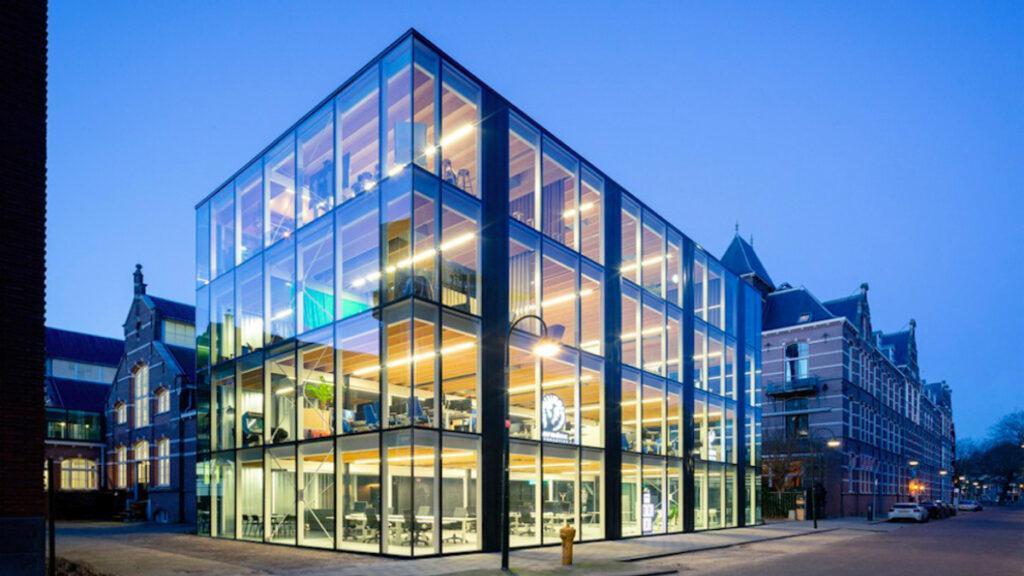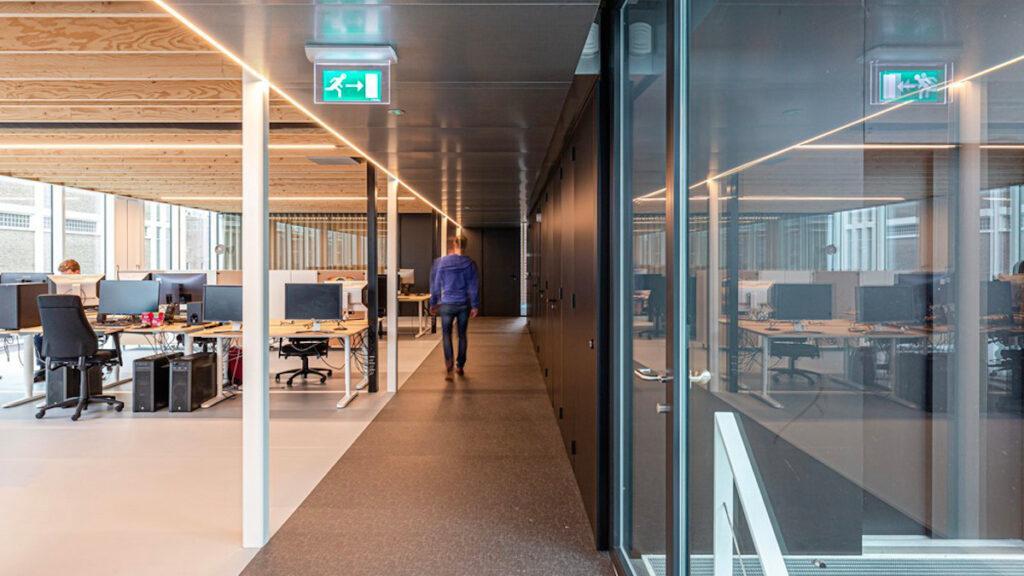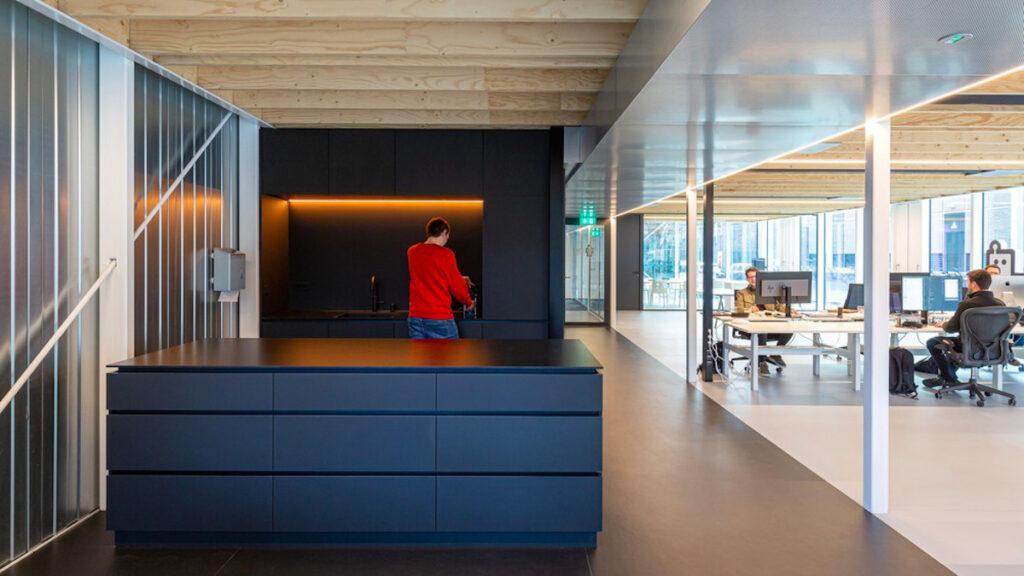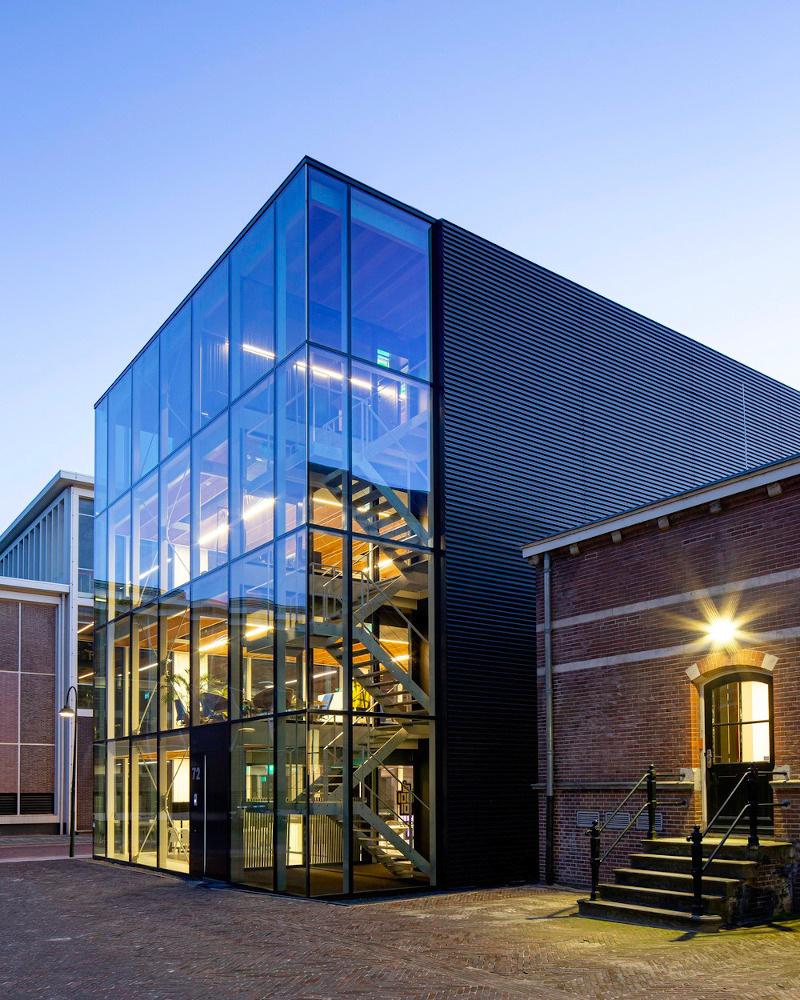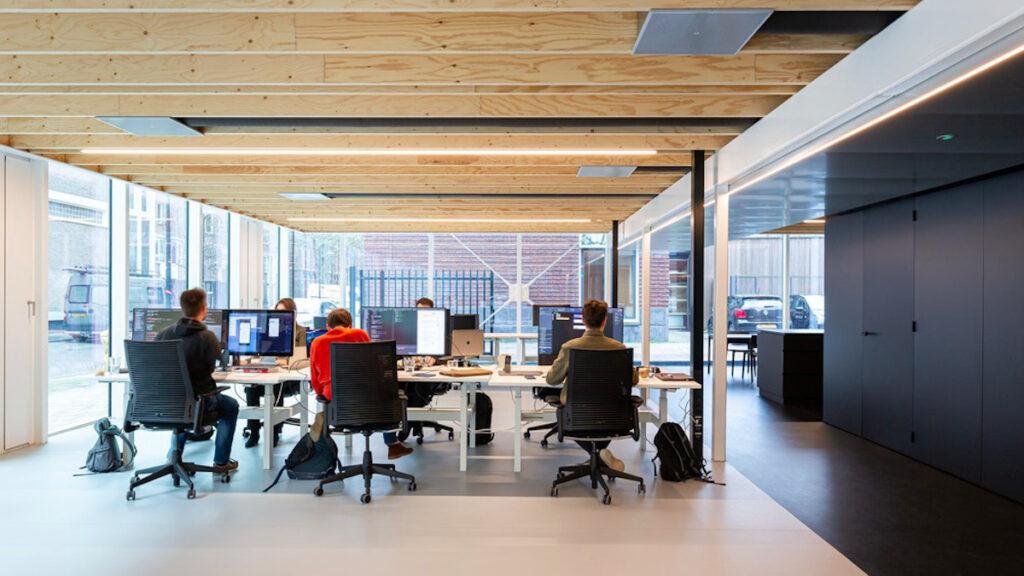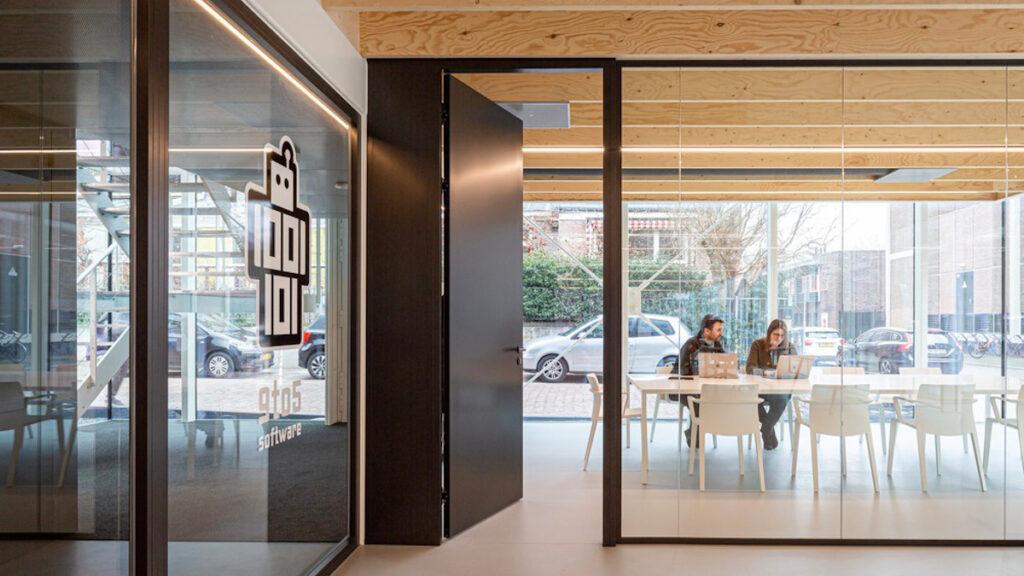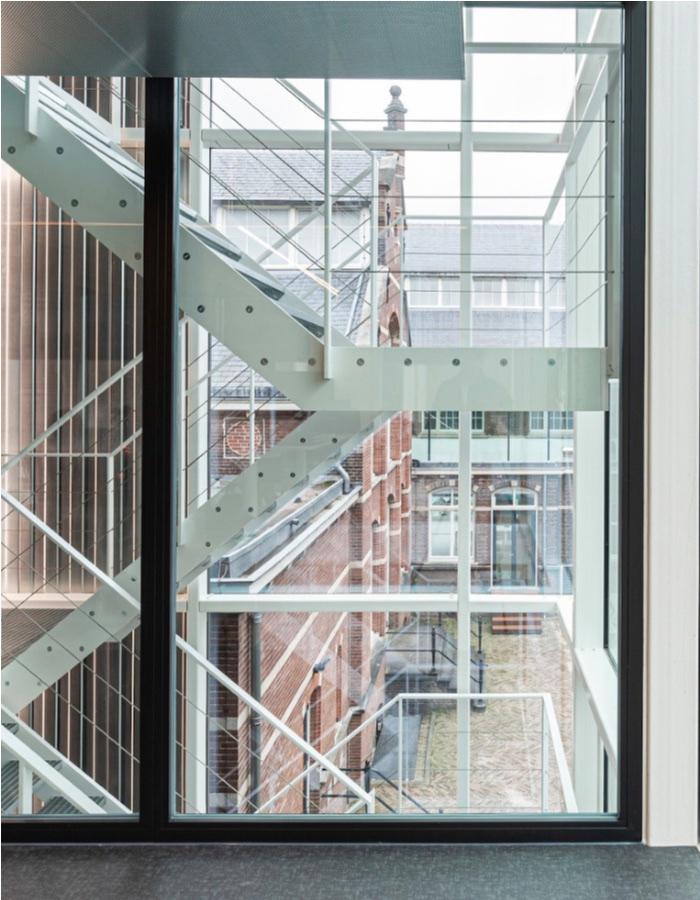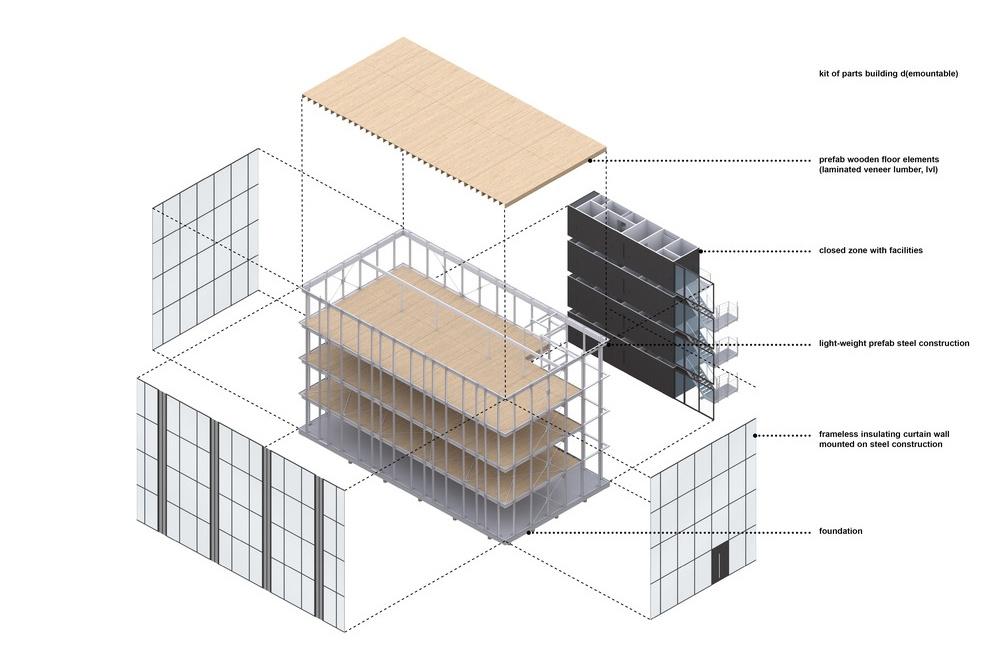Without a trace
The architecture bureau cepezed has designed a “Building D(emountable)” for the Dutch city of Delft. The building is entirely removable.
Constructing an ultra-modern building in a historic district always involves a certain risk. Designers need to consider how old and new can exist side by side. It is no coincidence that St. Stephan’s Cathedral in Vienna can be seen as a reflection in the glass facade of the “Haas House”, which was designed by architect Hans Hollein. Completed in 1990, the “Haas House” was one of the most controversial new structures in Austria’s Second Republic, and nevertheless has ultimately become one of its most popular projects.
Removable building
It seems that the architects at cepezed in the Netherlands wanted to play it safe. They literally “pitched” the Building D(emountable) in the Dutch city of Delft. The offices are situated right in the midst of a collection of historic buildings, with a special feature: the construction is entirely removable!
Circular economy
cepezed is known for its modular designs and removable constructions. The firm is especially concerned about the “circular real estate economy”. In other words, this means that building construction and usage should:
- prevent wastage of resources,
- reduce resource consumption,
- find a new purpose for old buildings,
- achieve ongoing improvement of properties,
- and ensure proper building maintenance, restoration and repair.
An increasing number of office buildings around the world are being constructed according to sustainability criteria. The Dutch are definitely the leaders here, though.
Creative cluster
Originally, Nieuwelaan 72 in Delft was the address of the former Technical University laboratories. cepezed bought the complex in 2012 and transformed it into a creative cluster, a co-working space for a wide variety of companies from the creative sector. cepezed’s own offices are now situated there as well. The only non-historic building was in an atrocious condition, and has now been replaced by the removable Building D(emountable).
The Building D(emountable) was created by cepezed. It was conceived for knowledge-based creative companies and now offers workspace for the app and website developer 9to5 software and also games developer Triumph Studios.
The Netherlands aims to make all building activities entirely sustainable by 2050. Head of cepezed Menno Rubbens sits on the national committee of experts that supervises the achievement of these goals. The Building D(emountable) is therefore a self-experiment, as it were, and also a prototype for other, subsequent projects with similar structures.
Light, flexible, resource-friendly
Building D(emountable) is 11 x 21.5 metres in size, with the rentable surface area on each of the four floors measuring around 200 square metres. “In addition to being demountable and mountable, the structure is also super lightweight,” say the architects. Utilisation of materials is kept to an absolute minimum. The interior design of the building can be entirely flexible. The ground floor is made of poured concrete; all other building components are modular and dry mounted.
Location: Nieuwelaan 72, Delft, NL
Contractor: Jan Pesman
Project development: cepezedprojects
Architect: Architectenbureau cepezed
Interior design: cepezedinterieur
Structural engineering: IMd Consultative Engineers
Construction coordination: cepezedbouwteam
Surface area: 968 m²
Optimised building kit
The Building D(emountable) was constructed according to a building kit that was optimised according to purely rational considerations, with a prefabricated and slender supporting structure made of steel. Its floors and roof are made of lightweight LVL elements (Laminated Veneer Lumber); the installations are integrated into them. Ribs of the LVL elements are visible and are part of the building’s aesthetics.
The organic screed consists of gravel-like granules in a honeycomb structure made of cardboard, with gypsum fibreboards on top. The entire screed is dry and easily removable. Its PVC finishing floor uses partly recycled PVC.
In addition, the building has no windowframes: the double-layer insulating glass is mounted directly on the steel structure, which is provided with welded screw profiles. The facade is largely transparent, which allows clear views both inside and out. Fresh air enters through vertical slats.
The entire building is largely fire-resistant – not much material was required for fireproofing, only the staircase has a fire-resistant partition. The air conditioners are integrated into the ceiling, and a heat exchanger enables them to be used for the heating as well. Roller blinds offer protection from the sun and light.
The construction only took slightly longer than six months to build. Short communication lines made coordination much easier and enabled a high standard of quality, especially as all the required experts – development, interior and construction management – were in-house at cepezed.
Similar projects have already been completed by cepezed, such as the “Temporary Courthouse in Amsterdam” and the restaurant “The Green House” in Utrecht, which won the Amsterdam Architecture Prize and the Netherlands Sustainable Buildings Award.
Text: Linda Benkö
Translation: Rosemary Bridger-Lippe
Photos, drawings: Lucas van der Wee, architectenbureau cepezed
